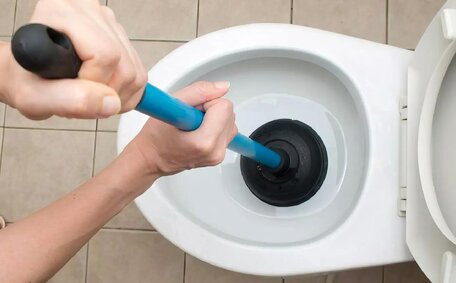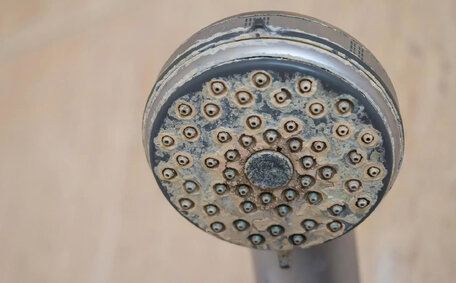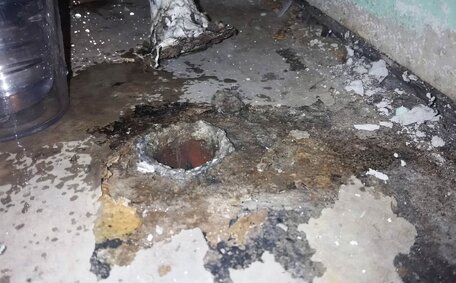Introduction: Why Hot Water Temperature Matters
Adjusting your home’s hot water temperature is essential for comfort, safety, and energy efficiency, with overly high temperatures posing scalding risks, particularly for children and the elderly.
Conversely, water that’s too cool can be uncomfortable and may not effectively eliminate harmful bacteria in your water heater and pipes.
Emu Plains Plumbing recommends setting your water heater to around 50 degrees Celsius for optimal performance, avoiding energy wastage and ensuring comfortable water temperatures for showers and other uses. Maintaining this temperature also reduces mineral buildup and corrosion in your system, as well as the risk of scalding.
Adjust your water heater and install a tempering valve to ensure safe and consistent temperatures, minimising scalding risks.
Checking Your Current Hot Water Temperature
Before adjusting, check your water heater’s current temperature to understand the baseline setting. Here are a few ways to do that:
- Verify the hot water temperature on your heater’s thermostat. Many units have a built-in thermostat, facilitating adjusting temperature with a gauge to monitor the output. This gauge is typically found near the tank’s bottom.
- Measure the tap water temperature with a thermometer to confirm its accuracy, translated into degrees Celsius. Let the water run for a few minutes to get a consistent reading. Compare the temperature to typical settings like 120°F or 140°F.
- Consult the manufacturer’s instructions for checking the temperature on continuous flow or on-demand water heaters within newer systems.
- If you have a boiler system, check the aquastat or thermostat on the boiler itself.
Establishing the current hot water temperature serves as a reference to adjust it appropriately, ensuring it’s neither excessively high nor too low. Note the thermostat location for future access when you’re ready to adjust the temperature.
Recommended Hot Water Temperature Settings
This equates to approximately 50 degrees Celsius, which provides comfortable hot water without unnecessary energy use and is suitable for most applications. It also slows mineral buildup and corrosion in your system.
However, for electric water heaters, maintaining at least 54 degrees Celsius can be crucial in preventing bacterial growth like Legionella. If set too hot, households with young children or elderly members might encounter dangerously high temperatures exceeding 60 degrees Celsius, designed to protect against pathogens. Yet, temperatures above the recommended threshold heighten the scalding danger.
Regularly check your water heater’s temperature and relief valve to ensure they’re in line with the manufacturer’s recommendations. To manage the temperature safely, install mixing valves at faucets in your electric hot water system to prevent temperature overrides. Prioritising insulation and regular maintenance will enhance your system’s efficiency.
Getting the balance right is crucial for your household’s comfort and safety, with around 50 degrees Celsius being an ideal benchmark for safety and energy conservation in Sydney homes.
Locating the Water Heater and Controls
Locating your water heater is the first step in adjusting the temperature. Here’s how to adjust common types of units:
- Gas water heaters, unlike combined gas-electric units, are commonly located in a closet, utility room, garage, or basement, often near an external wall for ventilation. Look for the gas line connecting to the unit and the thermostat controls.
- Electric water heaters are typically placed in garages, utility rooms, or closets, granting easy access for temperature adjustments. Check for the power cable and access panel for adjusting controls.
- Tankless water heaters, which provide hot water on demand, are commonly wall-mounted near areas of high water use, like kitchens or bathrooms.
- For boiler systems, look near the boiler itself for the thermostat controlling hot water temperature.
Once you’ve found your water heater, locate the thermostat, usually towards the bottom. It’s crucial to make sure power is disconnected safely before tinkering with the adjust temperature your unit is set at.
Adjusting Electric Water Heater Temperature
Adjusting the temperature for all your electric hot water heating needs is a straightforward process, but there are safety precautions to observe:
- Locate the access panel on the side of the tank to check temperature your hot water to ensure power is safely disconnected to your unit. This provides access to the thermostat to check your water heater set and heating elements.
- Turn off power to the water heater at the circuit breaker before making any adjustments. This is crucial to avoid electrocution.
- Remove the access panel with a screwdriver. Be careful not to damage any insulation or wiring.
- Locate the thermostat, usually towards the bottom of the tank. There may be two thermostats if it’s a dual element heater.
- Skillfully use a flathead screwdriver to modify the temperature dial on the thermostat for your electric hot water system. Gently turn up the dial to achieve the desired temperature setting.
- Replace the access panel, restore power at the breaker, and test the new water heater set temperature at a faucet after 15-20 minutes.
Proceed with caution when adjusting the temperature, being mindful not to exceed 54 degrees Celsius to avert scalding hazards. Contact a licenced electrician or plumber who can do a great job if you have any doubts or issues accessing the thermostat; appropriate maintenance and insulation will ensure efficiency.
Adjusting Gas Water Heater Temperature
Adjusting the temperature on a gas heater requires caution but can be executed by following these steps:
- Locate the gas control valve on the outside of the tank, which is essential for proper water tempering. There should be a dial that indicates the temperature setting.
- Consult the owner’s manual for specific instructions. On most models, you simply rotate the dial to raise or lower the setting.
- Before making adjustments, check that the pilot light is lit. Relight it if needed.
- Gently turn the dial to raise or lower water temperature, ensuring it stays below 50 degrees Celsius for safety, making small adjustments of around 3 degrees at a time.
- For tankless heaters, consult manufacturer guidelines as the adjustment process can vary.
- After adjusting, check the new setting by running a hot water tap and using a thermometer.
- Allow 15-20 minutes for the new temperature to reach the taps.
- Aim for settings of 49 degrees Celsius or below to reduce the risk of scalding.
- Ensure proper ventilation around a gas unit. Check for leaks annually or if any issues arise.
- Consider contact a licenced plumber if you have any doubts or trouble with adjustments.
When adjusting temperature water heater settings, it’s imperative to always exercise caution. Refer to the manual and make incremental alterations, adjusting the temperature up or down, all the while checking with a thermometer. This helps dial in the right temperature for your household’s needs without compromises to safety or efficiency.
Adjusting Tankless/On-Demand Water Heater Temperature
There is no single dial or thermostat to alter. Instead, tankless heaters have a digital control panel to manage temperature settings.
To change the temperature on a tankless unit:
- Locate the digital control panel on the exterior of the heater. Consult your owner’s manual for the exact location to change temperature your water heater.
- Turn on the control panel and navigate to the temperature settings menu.
- Follow prompts to input a new desired temperature or use arrow buttons to raise or lower the setting.
- Tankless heaters allow more precise temperature changes, usually in increments of 1 degree.
- Input the desired temperature, taking note of recommendations for settings around 120F.
- Save changes and test water temperature at a faucet after a few minutes.
- Make small adjustments and retest to hone in on optimal temperature.
Tankless h, usually in increments of 1 degree.Installing Mixing Valves for Safety
Mixing valves blend hot water from the heater with cold water to bring the temperature down to a safe level before it reaches your taps.
There are a few types of mixing valves to consider:
- Central mixing valves are installed near the water heater to temper water for the whole home.
- Point-of-use mixing valves are installed at or under sinks to regulate temperature at specific taps.
- Thermostatic mixing valves automatically blend water to maintain a consistent, preset temperature.
Tempering valves are advised when the water heater temperature exceeds 49 degrees Celsius, to mediate the risk of scalding. This may be necessary to control Legionella growth in some facilities, but can increase scalding risks. Mixing valves enable you to maintain a safe water temperature balance at the tap.
Emu Plains Plumbing provides expert advice on mixing valve options and professional installation services. Reach out to optimise your water temperature safely and efficiently.
- Check the thermostat monthly - Make sure the temperature setting hasn’t been accidentally bumped out of position. Refer to your owner’s manual for the location.
- the output temperature using a thermometer to ensure it’s still correctly calibrated.
- Inspect anodes and flush annually - Flushing the tank and replacing anode rods pump hot water more efficiently by reducing sediment buildup and preventing corrosion issues.
- Insulate hot water pipes - Wrapping pipes with insulation can save heat and minimises energy loss as water travels to faucets, maintaining the temperature set at your desired level.
- Replace heating elements - Over time, electric heating elements can become less effective. Replacing them restores proper heating.
- Clean inlet filters - Dirty filters on tankless heaters can impede flow hot water and temperature. Check and clean per manufacturer instructions.
Through periodic maintenance and hot water service checks, you can identify any temperature fluctuations and ensure your water heater operates optimally for efficiency and safety.
Offering great service, The licensed professionals at Emu Plains Plumbing did a great job with detailed heater servicing and exhaustive inspections of your hot water system. Contact us for a next day consultation to ensure your heater is delivering the right temperature water for your home’s needs.
When to Call a Professional Plumber
- If you are unable to locate the thermostat or controls to adjust temperature on your hot water heater.
- For gas water heaters, if the pilot light needs to be relit or any potential gas leaks are detected during inspection or adjustment.
- If your attempts to alter the temperature result in issues like a complete lack of hot water, or water that is still too hot or too cold.
- For installation of mixing valves or other accessories to help regulate your household’s hot water temperature.
- To ensure all adjustments meet Sydney and regional regulations for safety and efficiency.
After you contact them, the experienced plumbers from Emu Plains Plumbing came out, inspecting your system meticulously, setting your hot water temperature accurately, and ensuring adjustments are compliant with local codes. Contact us via phone at 1300 349 338 or email [email protected] to schedule a service appointment.
- If you are unable to locate the thermostat or controls to adjust temperature on your hot water heater.






